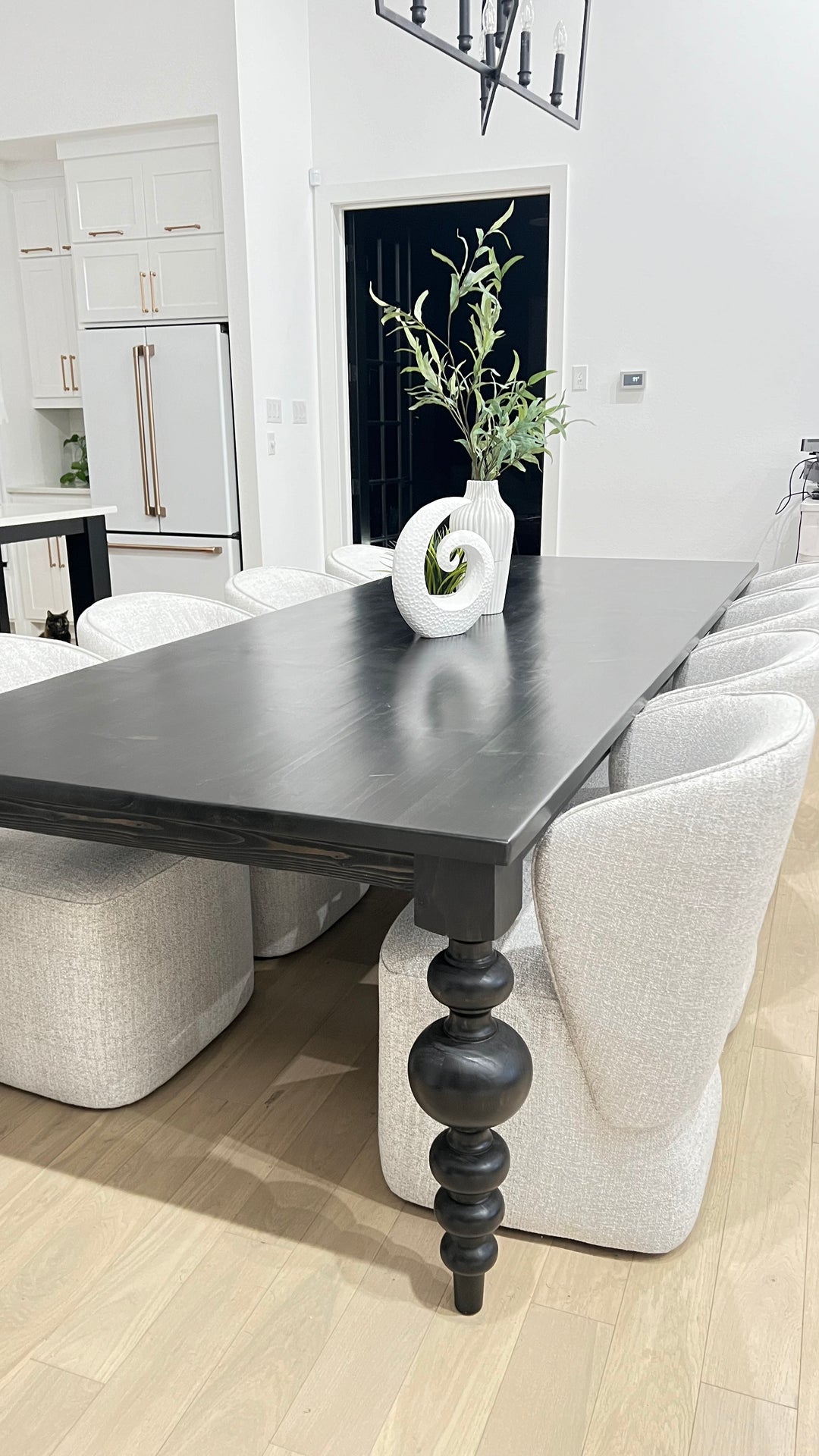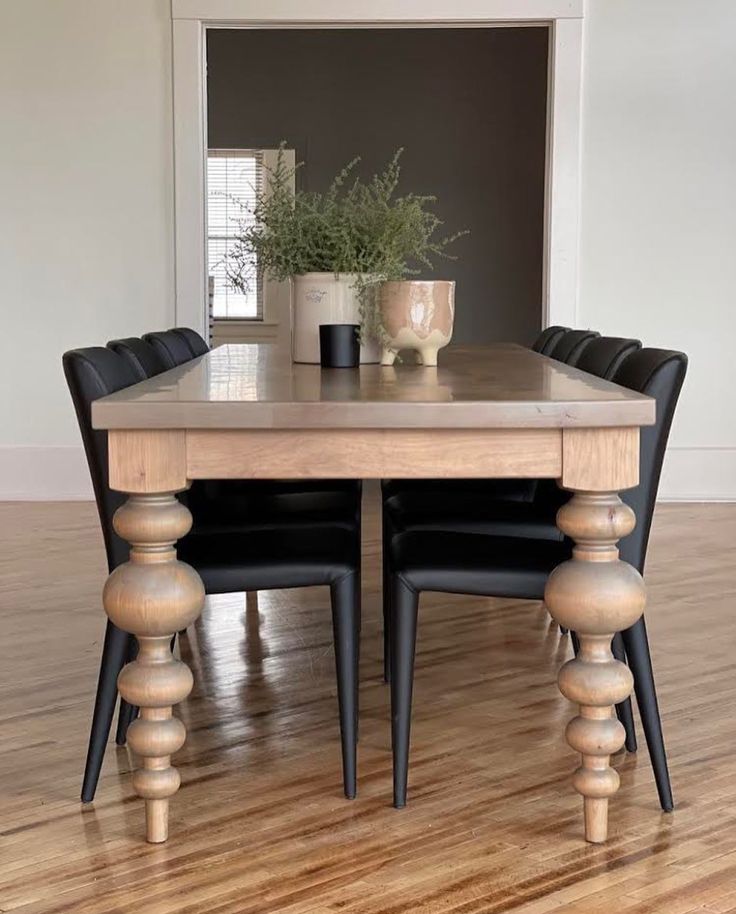From Conventional to Modern: Find the Suitable Eating Space Table Legs for Your Style
The option of dining-room table legs plays a crucial duty in defining the overall personality of your room, bridging the space in between traditional craftsmanship and modern-day looks. While traditional designs such as cabriole and turned legs evoke a feeling of timeless class, modern designs like hairpin and geometric alternatives offer a possibility for striking visual passion. Evaluating the right balance in between these styles needs a nuanced understanding of your existing design and personal preference. As you think about these aspects, the concern remains: how can you perfectly integrate these diverse leg designs to develop a harmonious dining experience?
Understanding Table Leg Styles
The variety of dining room table leg designs can considerably influence both the looks and performance of the room. Each leg design adds one-of-a-kind practical attributes and visual aspects, satisfying diverse layout preferences and usage requirements. Recognizing these designs is essential for choosing the right table that straightens with your general indoor layout vision.
For circumstances, conical legs offer a tidy, timeless look that can enhance an area's elegance, while stand bases offer security and take full advantage of legroom, making them ideal for smaller spaces. Hairpin legs, a hallmark of mid-century modern-day style, present a commercial panache, enabling an airy, open feel. Trestle legs stimulate rustic charm, giving robust support and a feeling of timelessness.
In addition, the option of materials plays a considerable duty. Wooden legs can bring heat and structure, whereas steel alternatives often share a sleek, modern vibe. Eventually, comprehending table leg styles is vital for creating a cohesive dining location that reflects individual design while making sure functionality and comfort. By thoughtfully taking into consideration these elements, you can improve both the visual and useful charm of your dining area.
Standard Table Leg Options
When selecting dining room table legs, traditional alternatives commonly embody ageless style and workmanship. These designs reflect an abundant heritage and a commitment to high quality, making them excellent for those who value classic appearances.
One of the most renowned typical leg designs is the cabriole leg, characterized by its graceful curved shape. This layout frequently features ornamental carvings and is most typically located in Queen Anne and Chippendale furniture. Another preferred alternative is the transformed leg, which flaunts a collection of smooth, rounded shapes that provide a classic look while keeping security.
Additionally, the straight leg, while easy, provides a basic and strong framework that can blend perfectly with a selection of tabletop styles. For those attracted to ornate outlining, claw-and-ball feet legs evoke a sense of magnificence and can offer as a magnificent centerpiece in any type of visit homepage dining area.
Finally, pedestal bases, although not purely legs, give an alternate typical option that permits for adequate legroom and can be magnificently carved. Each of these traditional leg styles contributes to the total atmosphere of a dining-room, weding function with aesthetic appeal.

Modern Table Leg Layouts
Modern table leg styles supply a varied variety of designs that emphasize ingenious materials and clean lines. These layouts frequently prioritize performance while working as striking focal factors within an eating room. Minimal aesthetics are widespread, with legs crafted from products such as metal, glass, and crafted timber, which add to a ventilated and contemporary feeling.
One popular style is the barrette leg, characterized by its slim, tapered structure that gives stability without overwhelming the table top (dining room table legs). This style is commonly found in mid-century contemporary furnishings and can easily enhance different table forms. Another pattern is making use of geometric shapes, where legs may tackle angular or asymmetrical types, adding aesthetic passion and a touch of artistry

Mixing Designs for Unique Rooms
Frequently, property owners seek to create one-of-a-kind dining spaces that reflect their individual design by blending various layout elements. This strategy permits the consolidation of varied visual appeals, leading to an unified yet distinctive atmosphere. Coupling a rustic wooden table with streamlined, modern metal legs can develop a captivating contrast that boosts the room's overall allure.
Furthermore, visit their website integrating vintage table legs with modern tabletops can evoke a feeling of history while preserving a modern-day sensibility. Such combinations not only showcase individual taste however additionally encourage creative thinking, permitting house owners to curate an area that really feels both individual and welcoming.
Color plays a vital duty in this blending process; picking table legs that complement or comparison with the existing color design can enhance visual rate of interest. Whitewashed legs can soften the daring of a dark table surface area, creating a balanced visual.
Tips for Choosing the Right Legs
Choosing the right table legs is important for accomplishing both capability and aesthetic charm in your eating space. Begin by thinking about the total style of your space. Typical settings gain from legs that feature complex makings or transformed layouts, while contemporary areas may ask for sleek, minimal designs.
Next, evaluate the elevation and security of the legs. dining room table legs. Standard table vary between 28 to official site 30 inches in elevation, so make certain the legs enhance this measurement for comfort. In addition, robust materials, such as hardwood or metal, can enhance stability and durability
Review the leg form too-- alternatives consist of right, tapered, or stand designs. Straight legs offer a classic look, while tapered legs can add a touch of elegance. Pedestal bases provide adequate legroom and are perfect for smaller rooms.
Conclusion
In summary, picking the excellent eating room table legs needs careful factor to consider of both modern and standard styles. By harmonizing leg design, height, and product with the general décor, a cohesive and welcoming environment can be achieved.
The selection of dining area table leg styles can considerably affect both the aesthetic appeals and capability of the room. Eventually, recognizing table leg styles is essential for producing a cohesive eating location that reflects personal design while making certain usefulness and comfort.One of the most famous typical leg designs is the cabriole leg, defined by its graceful curved shape. Straight legs supply a traditional appearance, while conical legs can add a touch of sophistication.In summary, selecting the suitable dining room table legs calls for careful consideration of both standard and modern styles.